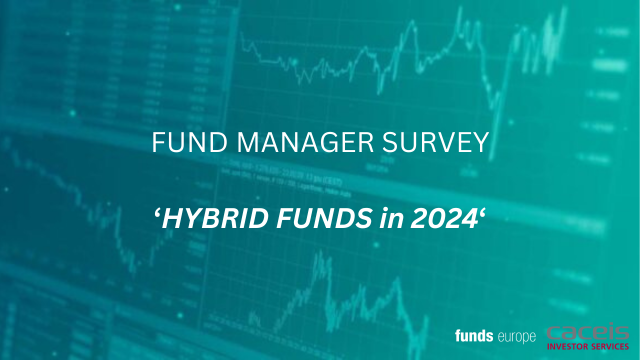Investors with the right strategic approach can benefit from the breadth of high-quality Chinese bonds. BlackRock and FTSE Russell analyse some of the key considerations.
Given the recent equity volatility in China led by the regulatory clampdown, have you seen any spillover to the bond market, especially in China rates? What do you see as the main drivers for further flows into China rates and are there any risks to be mindful of going forward?
Karen Ng, vice-president fixed income, BlackRock – We have seen idiosyncratic risks in the property sector but overall impact on the rates space has been limited. The Chinese 10-year yield has rallied to slightly below 3%. Any negative investor sentiment from a China rates perspective has also been minimal, in fact growth expectation is now lower. We have seen flows continue to come through our China bond platform. That said, investing in China is not risk-free. There is a long and diverse menu of investor concerns including China’s rising debt, the potential for a sharp currency move and capital controls. These all have implications for the China rates market. Above all, there is the long-standing US-China strategic confrontation. For clients who find investing in China appropriate in their portfolios, we believe the message is to understand the underlying risk drivers and take the right strategic approach.
The key drivers for China bond flows remain yield and diversification. China offers a high-quality yield of close to 3% with A+ underlying credit quality. Globally more than half of the higher yielding bonds, which we define here as 2.5% or more, are from China. Adding to that, because of the shorter duration, China rates are seen to be more attractive compared with other major bond markets on a duration-adjusted basis. Furthermore, the bonds have proved they can serve as a flight-to-quality vehicle. Chinese government bonds delivered positive returns during the initial Covid-19 shock in February and March 2020 versus other major asset classes which experienced severe drawdowns. We saw similar outcomes during previous episodes of market volatility such as in the summer of 2015 and December 2018.
Strong structural demand is being driven by index inclusion. China makes up about 7% of the Bloomberg Global Aggregate index and 10% of the J.P. Morgan Global Bond Index – Emerging Markets global diversified. The next development to watch would be the inclusion in the FTSE World Government Bond Index (FTSE WGBI), that started at the end of October. Given the strong tailwinds, we expect Chinese bonds will continue to attract capital flows in coming years.
FTSE Russell has become the third, and possibly most important, index provider to admit Chinese bonds into its flagship global bond index. What drove your decision to include China bonds in the FTSE World Government Bond Index?
Zhanying Li, Senior Director, Head of Data & Analytics Product Sales, APAC, FTSE Russell – There has been a continuous commitment from Chinese authorities to opening up the financial market. China has simplified rules for Qualified Foreign Institutional Investors (QFIIs), and Renminbi-Qualified Foreign Institutional Investors (RQFIIs). Rules introduced in 2020 expanded the range of securities in which a QFI can invest. China’s Bond Connect channel has improved access, as has the removal of quota limits for foreign investors.
The development of a mature market structure led FTSE Russell to reclassify the market accessibility level of China in March 2021. FTSE Russell has engaged closely with Chinese authorities and key stakeholders to monitor the previously implemented market enhancements and the latest reforms. These include the simplification of account-opening processes, the option to carry out foreign-exchange transactions with third parties, and freedom to lengthen the settlement cycle beyond T+3.
The decision to add the second-largest bond market in the world to our flagship world government bond index reflects the enhanced accessibility of China’s bond market with continued opening-up reforms, as well as rapidly growing interest from foreign investors to participate in the market.
Can you give us more details around the index inclusion and implementation? What impact are you expecting in terms of flows?
Zhanying Li – Only yuan-denominated Chinese government bonds will be included in the FTSE WGBI. The benchmark focuses on larger issues, with minimum outstanding amounts of 3.5 billion yuan and maturities with 30 years or less, which tend to be more liquid. Once the inclusion is completed, China is expected to take up 5.25% of the index. The market expects inflows of between $150 billion and $180 billion into Chinese bonds as a result.
China’s bond market has been very popular among retail investors. Do you see retail investors continuing to dominate flows or institutional clients also joining in?
Karen Ng – Chinese bond exchange-traded funds saw inflows of about $6.2 billion in 2020. There were about $9 billion of inflows year-to-date, meaning we have already exceeded 2020 flows this year. From iShares’ perspective, we see very similar flow trends on our platform. We started running onshore China index strategies in 2019, and these have seen very strong momentum.
A very broad range of investors are using iShares China bond strategies. These include wealth and institutional investors using our ETFs to track an index, or take an overweight position. There are also dollar and euro government bond investors seeking diversification from low- or negative-yielding assets. The ETFs can also be advantageous to enhance yield in multi-asset portfolios.
How do you see the liquidity of the underlying market and how do you go about accessing it? What logistical and set-up considerations can you share?
Karen Ng – As in other bond markets, the rates segment is the most liquid in the fixed-income market. Liquidity for Chinese rates and average daily volumes are fairly high, with trading volumes steadily growing year on year and the investor base becoming increasingly diversified.
Key considerations in onshore China are the choice of market, which could be the China Interbank Bond Market, the Exchange Market, or both. The choice of currency funding channel, whether onshore or offshore renminbi are used, as well as hedging strategy, all need attention. It’s also important to consider the access channel, whether CIBM Direct or Bond Connect, and relationships with custodians and trading counterparties.
These are the five key pieces of the jigsaw puzzle. In iShares, our portfolio management team is located in Singapore, in the same time zone as the onshore market, with established connections with local brokers.
Our portfolio managers have deep knowledge of the onshore market and carry out proprietary liquidity analysis to navigate liquidity.
© 2021 funds europe





